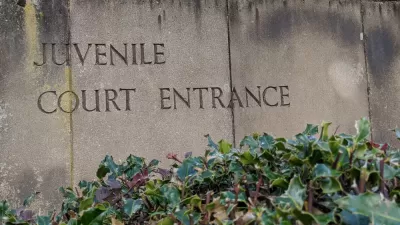Absurd as it may sound, minor children are sometimes named in eviction filings. If a child’s name makes in onto official court records—especially if those records are public and online—the damage can be irreversible.

*Linda’s children were too young to write their own names when they were entered as defendants into a New York state housing court computer. Both kids, now 3 and 7, are identified as legal parties in a pending eviction case against their mother.
Absurd as that may sound, it’s not a fluke. Minor children are sometimes named in eviction filings. When it happens, the damage is acute and difficult to repair even if it’s caught quickly. If a child’s name makes in onto official court records, especially if those records are public and online, the damage can be irreversible.
Almost a year ago, Linda’s landlord banged on her apartment door and quizzed her then-6-year-old, asking the child to spell both kids’ names. The landlord showed up unannounced while Linda was in the bathroom, and her older child opened the door before Linda could intervene.
“I was so upset and disturbed and angry,” she says. “This is an adult situation, why are the children involved? When I spoke with the landlord, he said his lawyer told him that to evict everyone from the premises, everyone’s name should be listed on the eviction notice.”
Attorneys familiar with the issue say kids are sometimes named in evictions to intentionally harass or intimidate tenants, though usually the landlords (or their attorneys) misunderstand the laws and/or have little regard for the long-term consequences evictions inflict on children and families.
In New York, children are being named in eviction fillings more often recently as an unintended consequence of the state’s Housing Security and Tenant Protection Act of 2019. A provision in the law uses language that can be misinterpreted to mean ...
FULL STORY: Minor Defendants: Kids Are Being Named in Evictions

Planetizen Federal Action Tracker
A weekly monitor of how Trump’s orders and actions are impacting planners and planning in America.

Chicago’s Ghost Rails
Just beneath the surface of the modern city lie the remnants of its expansive early 20th-century streetcar system.

San Antonio and Austin are Fusing Into one Massive Megaregion
The region spanning the two central Texas cities is growing fast, posing challenges for local infrastructure and water supplies.

Since Zion's Shuttles Went Electric “The Smog is Gone”
Visitors to Zion National Park can enjoy the canyon via the nation’s first fully electric park shuttle system.

Trump Distributing DOT Safety Funds at 1/10 Rate of Biden
Funds for Safe Streets and other transportation safety and equity programs are being held up by administrative reviews and conflicts with the Trump administration’s priorities.

German Cities Subsidize Taxis for Women Amid Wave of Violence
Free or low-cost taxi rides can help women navigate cities more safely, but critics say the programs don't address the root causes of violence against women.
Urban Design for Planners 1: Software Tools
This six-course series explores essential urban design concepts using open source software and equips planners with the tools they need to participate fully in the urban design process.
Planning for Universal Design
Learn the tools for implementing Universal Design in planning regulations.
planning NEXT
Appalachian Highlands Housing Partners
Mpact (founded as Rail~Volution)
City of Camden Redevelopment Agency
City of Astoria
City of Portland
City of Laramie





























